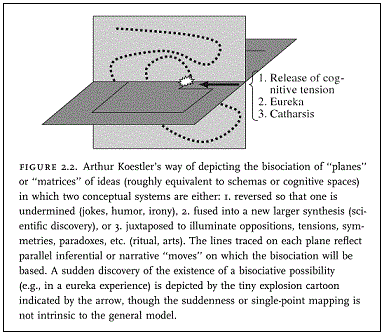Of a non-comparative use of the DoubleQuotes method
[ by Charles Cameron — further thoughts on the advantages of seeing double ]
.
I’ve said before that when I was at The Arlington Institute, my boss used to ask me to watch out for “early indicators”, and joked that in my book, two is the first number — I don’t see an “indicator” until I see a pattern emerging.
Dutch artists celebrate George Orwell's birthday by putting party hats on surveillance cams http://t.co/qOM7i8FL4u pic.twitter.com/0YjATl3sH5
— Aruna Sekhar (@aruna_sekhar) August 18, 2015
Putting it bluntly, one point is pointless — things could go anywhere from there. Two points suggest a line, a link, a connection — a possible, maybe even plausible, trend.
And so it is with the two photos above. Here the point is not to compare and contrast the two images of surveillance cameras wearing party hats, but to see that they represent a class — the presence of two concrete instances strongly implies the higher level abstraction: hah! they’re watching us!
It’s that sense I have of two being the beginning of thought that makes me so fond of the DoubleQuotes format — and of Arthur Koestler‘s insight, which I’m always quoting, about creation occurring at the intersection of two spheres..
If I’m a fundamentalist about anything, it’s the notion that it takes two to tango!




August 26th, 2015 at 3:10 am
But it takes 3 points or a line and a point to define a plane.
So it may take two to tango, to become a cross-sectional plane in the distribution of a double-quote, two points don’t cut it.
So it takes two to tango, but it takes one more point to intersect at the two spheres.
This is because spheres are three dimensional.
August 26th, 2015 at 5:42 am
Ah, you caught me, Larry. I should have written “of Arthur Koestler‘s insight, which I’m always quoting, about creation occurring at the intersection of two disciplines” and avoided the dimensional issu of sphericity!